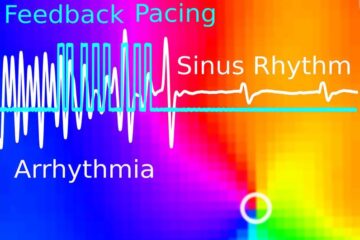Researchers discover protein that controls bone growth

A research team led by Dr. Pierre Moffatt of the Shriners Hospital for Children in Montreal and McGill University’s Department of Human Genetics has uncovered the molecular mechanism by which the protein osteocrin controls bone growth – a discovery that may have important implications for people suffering from bone diseases affecting skeletal growth. The team’s findings appear in the December 14 edition of the Journal of Biological Chemistry.
Osteocrin is a small protein produced by the body’s bone-forming cells, or osteoblasts. In this study, mice that were genetically engineered to over-express osteocrin developed hunchbacks and elongated bones. This led Dr. Moffatt and his colleagues to the discovery that osteocrin locally controls the bone's supply of a hormone known as CNP, which plays an important role in the regulation of bone growth.
“The osteocrin gene was discovered as part of a project to identify novel bone genes that might have possible therapeutic actions,” explained Dr. Moffatt. “The project focused on the identification of classes of genes which are particularly attractive to medical researchers because they can be potentially exploited to develop new drug-based therapies.”
Most of the research was initially carried out at Phenogene and Enobia Pharma, two Montreal-based biotech companies, but it was finalized in Dr. Moffatt’s lab at the Shriners Hospital for Children in Montreal.
“This fundamental research could pave the way to the rationalized design of new molecules which could have beneficial effects in various disorders that impair bone growth, particularly in children,” said Dr. Moffatt.
Media Contact
More Information:
http://www.jbc.org/cgi/content/abstract/282/50/36454All latest news from the category: Life Sciences and Chemistry
Articles and reports from the Life Sciences and chemistry area deal with applied and basic research into modern biology, chemistry and human medicine.
Valuable information can be found on a range of life sciences fields including bacteriology, biochemistry, bionics, bioinformatics, biophysics, biotechnology, genetics, geobotany, human biology, marine biology, microbiology, molecular biology, cellular biology, zoology, bioinorganic chemistry, microchemistry and environmental chemistry.
Newest articles

Wildfire danger to increase due to climate change
WSL Institute for Snow and Avalanche Research (SLF) researchers expect an elevated wildfire danger in the Alpine Foreland from 2040 onwards due to changing meteorological conditions. The danger currently remains…

Advanced Brain Science Without Coding Expertise
Researchers at Helmholtz Munich and the LMU University Hospital Munich introduce DELiVR, offering a new AI-based approach to the complex task of brain cell mapping. The deep learning tool democratizes…

Gentle defibrillation for the heart
Using light pulses as a model for electrical defibrillation, Göttingen scientists developed a method to assess and modulate the heart function. The research team from the Max Planck Institute for…





















